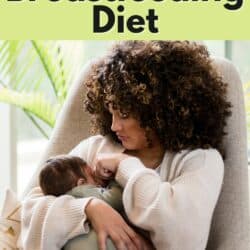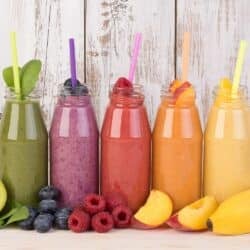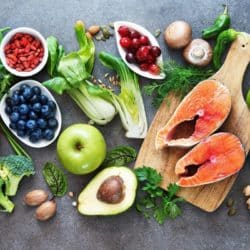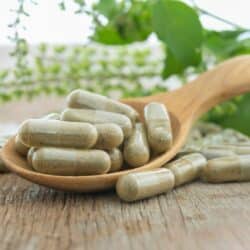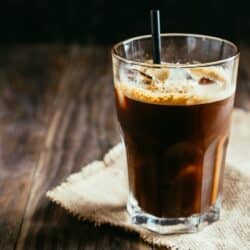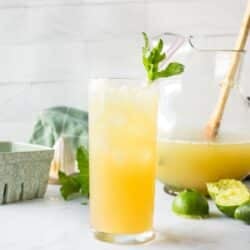Dairy-Free Breastfeeding Diet (Tips & Recipes)
If you need to go dairy-free while breastfeeding, then you may need support on how to get started. This article shares the top tips for getting started with a Dairy-Free Breastfeeding Diet, including what foods to avoid and what to eat to ensure you and your baby are getting the right nutrition.

Reasons to go dairy-free while breastfeeding
The most common reason to go dairy-free while breastfeeding is because it has been advised by your doctor or healthcare provider. This may be suggested when your baby shows signs of having sensitivity to the protein in cow’s milk.
It is thought that sensitivity to the lactose in milk and other dairy products may be responsible for baby’s symptoms. Lactose is the natural sugar found in dairy products. But this is rarely the case – after all, breastmilk is rich in lactose.
Cow’s milk contains large proteins that can be passed in a relatively intact state into human milk. It’s usually these proteins found in dairy products that can cause problems for sensitive babies, as opposed to the lactose milk sugars. In other words, it is more likely that your infant may have a dairy intolerance to the proteins in milk as opposed to a lactose intolerance.
The symptoms of an allergy or sensitivity to the proteins in cow’s milk include:
- fussiness, especially after feeding
- wheezing
- colic-like symptoms
- skin problems, such as rashes, eczema, and hives
- vomiting
- diarrhea (sometimes with blood)
- constipation
- continuous crying
- blocked nose
- or other symptoms of an allergic reaction
Some breastfeeding moms decide to go dairy-free without speaking to a medical professional first, simply to see if it reduces fussiness and helps their babies settle.
But research shows that the actual number of breastfed babies with an allergy or sensitivity to cow’s milk protein is very small. Furthermore, a true allergy/sensitivity usually causes several of the symptoms above – and not just fussiness.
For that reason, it’s not a good idea to completely rule out dairy products without speaking to your doctor first. Eliminating an entire food group without supervision could lead to nutritional deficiencies, and this is something you need to avoid more than ever when nursing a baby.
See my related article on the benefits of a dairy-free diet.
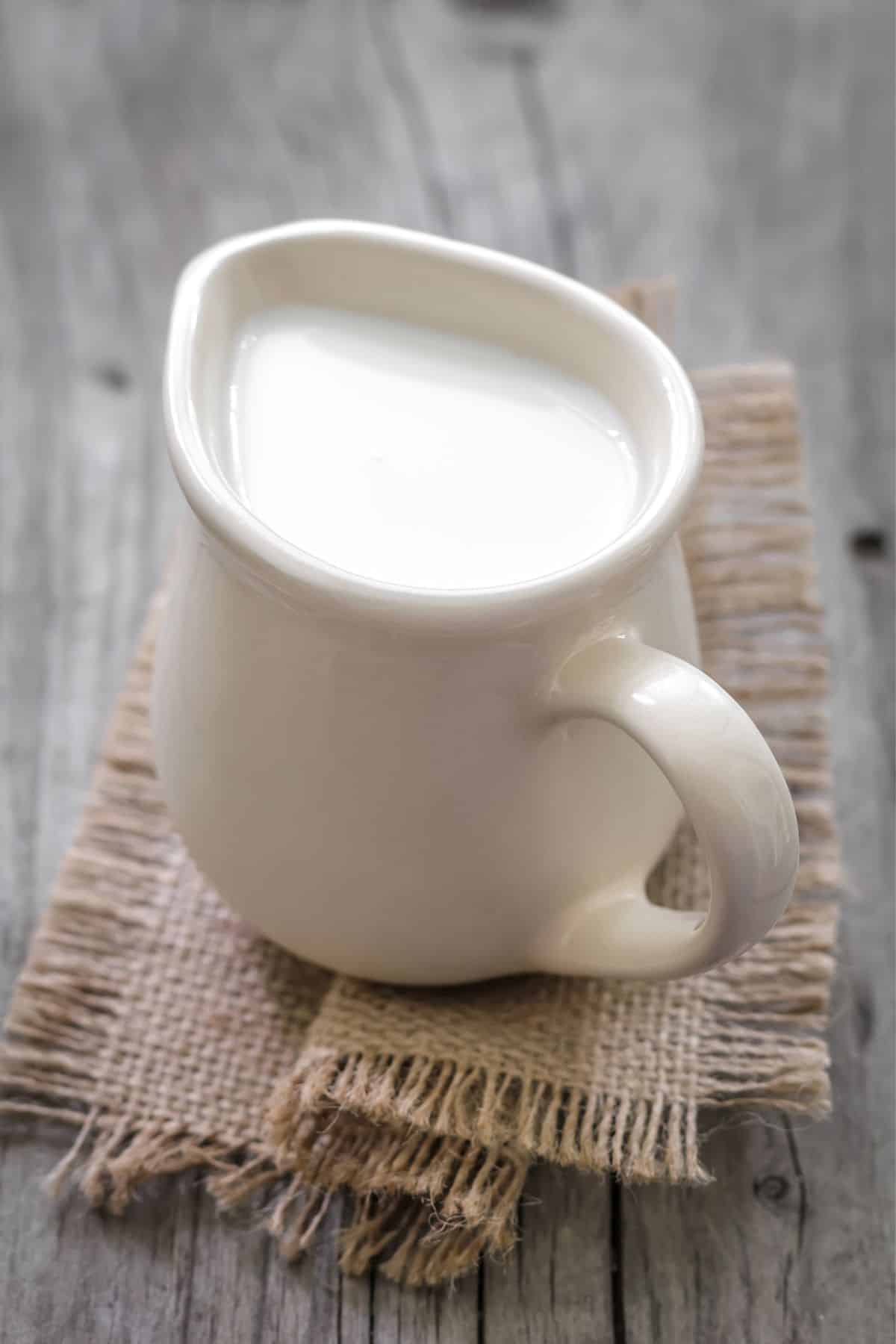
Dairy-free foods to avoid
If you do decide to try a dairy-free diet to see if it reduces your infant’s symptoms, then you’ll need to try eliminating all milk and dairy products. This means the breastfeeding mom should avoid eating all of these food items for a certain amount of time.
Dairy products to avoid include:
- Milk
- Cream (including sour cream, crème fraîche, etc)
- Yogurt
- Cheese (including cottage cheese, cream cheese, etc)
- Ice cream
- Butter
- Many types of margarine or spread
You’ll need to avoid milk from other animals, too – this includes sheep, buffalo, and goat. The proteins that these kinds of milk contain are very similar to cow’s milk protein, so it’s likely they will affect your baby in the same way.
You will also need to avoid products that contain milk as an ingredient. And there are many more than you might think.
Milk is used to make chocolate and most chocolate spreads. It is also found in many processed or pre-prepared meats and fish, along with cakes and cookies.
If you are in any doubt, check the labels carefully. Because so many people are sensitive to milk, it is classified as a major food allergen. According to the Food Allergen Labeling and Consumer Protection Act of 2004, packaged foods marketed within the USA must clearly disclose when they contain a major allergen.
Manufacturers can show that a product contains milk in several ways. It can be included in the ingredient list, or as part of a “contains” statement – for example, “Contains Soy, Milk, and Wheat.”
Alternatively, it can appear in parentheses next to the food source – for example, “lecithin (soy),” “whey (milk)”, and “flour (wheat)”.
Eating at a restaurant can be challenging, as it may not be clear whether or not menu items contain any dairy products. Look for restaurants comfortable with accommodating dietary requests as they will be able to answer your questions more easily.
What about eggs?
Eggs are sometimes incorrectly classified as dairy foods and are often found in the same refrigerated area at the grocery store as milk.
However, the word “dairy” relates to the products that are made from the milk of mammals. Eggs don’t fall into this category, so eggs are perfectly safe to eat on a dairy-free diet.
Dairy alternatives to include
When you cut dairy out of your diet, you will likely reduce the amount of calories, protein, and fats you are consuming. These nutrients are important for you AND your baby, so it is essential you replace them from other sources.
Fortunately, there are plenty of dairy-free options you can still enjoy while breastfeeding. This is good news for the breastfeeding mother who wants to try an elimination diet.
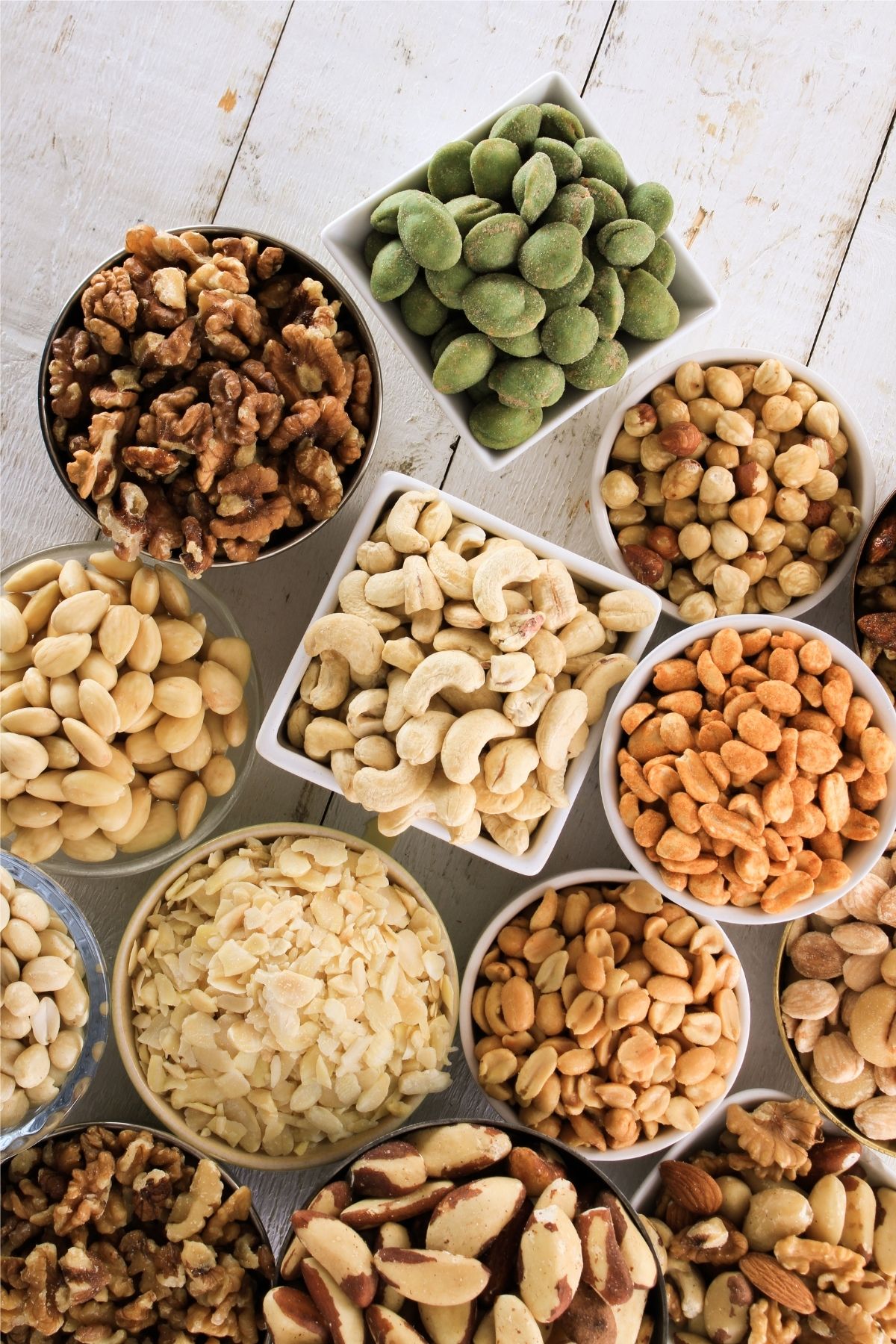
Meat, nuts, and beans are all good protein sources, with meat and nuts also supplying fats.
Tofu is also high in protein, although your doctor may recommend avoiding it and other soy products. This is because some babies who are sensitive to the protein in cow’s milk will also react to soy proteins.
Other alternatives to foods containing dairy include:
Dairy-free milk alternatives
Try to find brands that are calcium enriched and be sure to check that they don’t contain soy (if your doctor has recommended avoiding this too). Oat milk, almond milk, and coconut milk are all good options. These can be used in your recipes, too – for example, in a sauce that you’d usually prepare with milk.
Try some of the recipes in this list of the best breastfeeding smoothies that are all made dairy-free with real food ingredients.
Dairy-free spreads
These make a great alternative to butter or margarine. Remember to check the label to ensure that they don’t contain buttermilk (which is not dairy-free).
Commercially prepared dairy-free products
These days, food manufacturers are a lot more knowledgeable about food allergies than they used to be. Subsequently, there is much more commercially prepared food available for specific dietary requirements.
In most areas, you will be able to find dairy-free yogurts, ice-creams (Ben and Jerry’s make some!), and cheeses.
You might also want to check out your local supermarket’s range of vegan products, as these won’t contain any dairy at all. Check to see if there are any vegan restaurants in your area too, as these will be great for eating out without the worry!
Alternatively, search for “kosher” restaurants where the mixing of meat and dairy items is strictly forbidden.
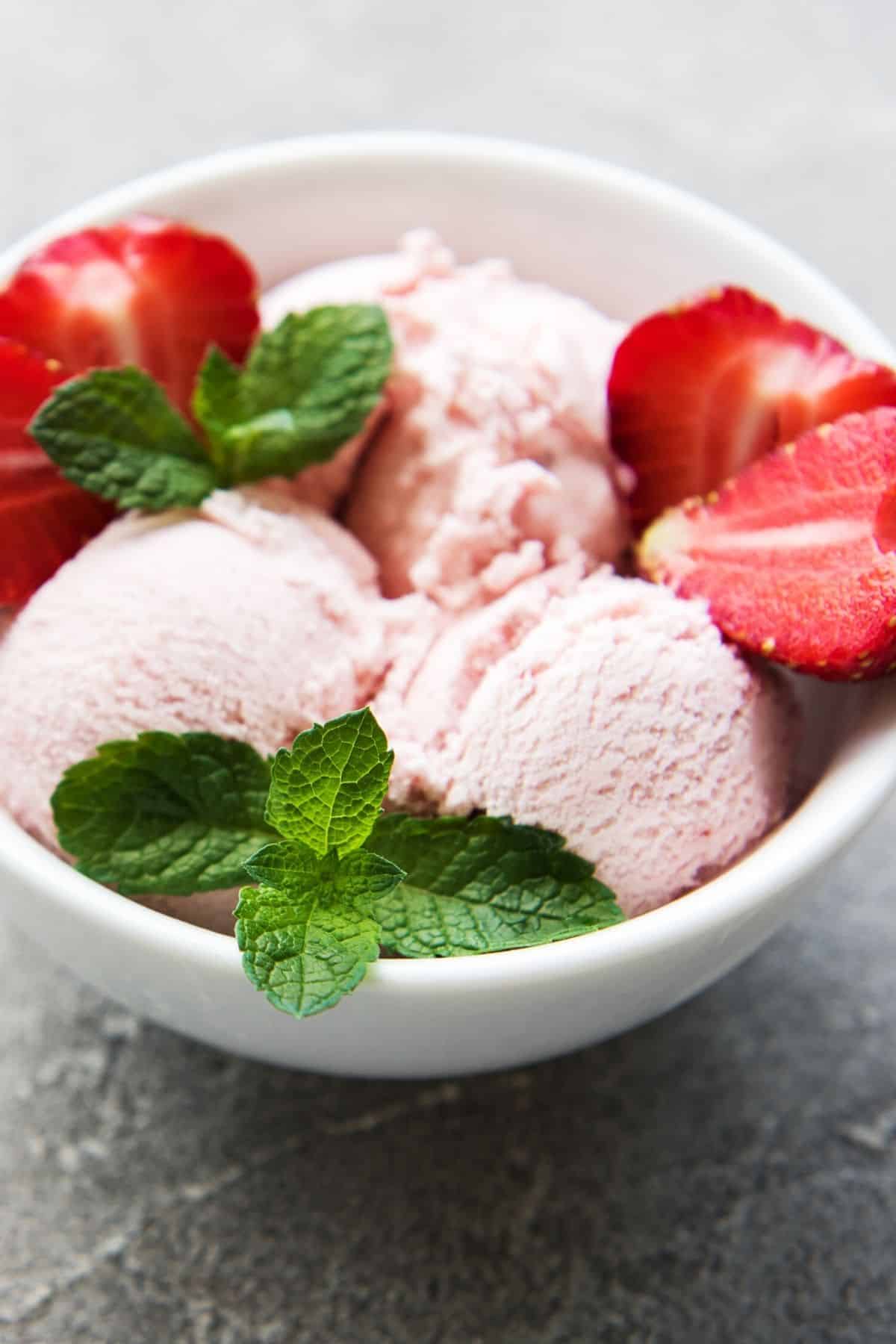
Give this vegan strawberry ice cream a try!
FAQs
Cow’s milk and the products made from it are significant sources of calcium. So it is important to consume calcium from other foods – particularly at a time when your needs are so high.
Cow’s milk and the products made from it are significant sources of calcium. So it is important to consume calcium from other foods – particularly at a time when your needs are so high.
The recommendation from the National Academy of Sciences is that breastfeeding women consume 1,000 mg (milligrams) of calcium every day.
Some excellent sources of calcium include:
Leafy green vegetables, such as collard greens, kale, and broccoli
Bok choi
Calcium-fortified cereals
Calcium-enriched dairy-free milk alternatives
Dried apricots
Canned fish (especially if the bones and skin are eaten)
Ground sesame seeds
Nuts, especially almonds and Brazil nuts
Blackstrap molasses
There are calcium supplements available too, but some types are better absorbed than others. For that reason, you might like to discuss your calcium requirements – and the best supplement for you – with your doctor.
Rest assured, though, even on a dairy-free diet, your breast milk will still be a great source of calcium for your baby. Our bodies are designed to create milk that is nutritionally perfect for our little ones, even if it has to take the calcium from our own stores in order to do so.
Probably not.
You may have heard that people who avoid dairy for digestive reasons will still consume ghee.
That’s because – like butter – ghee contains very little lactose or casein (a milk protein). But it is not 100% dairy-free, so it won’t be suitable for a strict dairy-free diet.
That said, you may be able to experiment with ghee and see if your infant tolerates ghee in your diet.
It can take anywhere from 10 days up to 3 weeks for cow’s milk protein to be eliminated from your breastmilk. So don’t expect to see any immediate changes in your baby.
It’s a good idea to keep a diary of how your baby reacts once you give up dairy, noting things like his or her fussiness, frequency and type of stools, and how often he or she spits up. This will help you and your doctor determine if dairy was – indeed – the cause of your baby’s symptoms.
Dairy-Free Recipes to Try
- Healthy Hot Chocolate
- Vanilla Hemp Milk
- Chia Breakfast Pudding
- Vitamix Ice Cream
- Instant Pot Chickpea Stew with Coconut Milk
- Dairy-Free Pesto Pasta
- Healthy Egg Salad Without Mayo
More Helpful Dairy-Free Resources
Conclusions
The thought of going dairy-free can be pretty daunting.
But as you can see, there are still plenty of tasty foods you can enjoy – and it’s very important to remind yourself that this is only a temporary situation.
Under your doctor’s guidance, you may be able to return to your regular diet within just a few months. And if your baby is feeling happier, so will you.
That being said, some breastfeeding moms discover that a dairy-free diet leads to them making wiser food choices overall – and that they actually feel a lot better as a result.
So who knows, cutting out dairy may ultimately lead to big improvements in your own health, too.
Don’t forget to join my newsletter list to get exclusive clean eating recipes and tips. The newsletter is 100% free with no spam; unsubscribe anytime.
Note: this post is for informational purposes only and is not intended as medical advice. Please consult your healthcare provider for recommendations related to your individual situation.
About the Author: Carrie Forrest has a master’s degree in public health with a specialty in nutrition and is a certified holistic nutritionist. She is a top wellness and food blogger with over 5 million annual visitors to her site. Carrie has an incredible story of recovery from chronic illness and is passionate about helping other women transform their health. Send her a message through her contact form.


